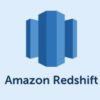Tag: snowflake_interview
Retrieving a list of all user names within the current account in snowflake
The ALL_USER_NAMES function in Snowflake is a powerful tool for retrieving a list of all user names within the current…
Snowflake : Combining multiple arrays into a single array, removing duplicate elements in Snowflake
ARRAY_UNION_AGG ARRAY_UNION_AGG is a built-in function in Snowflake that combines multiple arrays into a single array, removing duplicate elements. This…
Creating, cloning, and dropping databases in Snowflake
Snowflake is a powerful cloud-based data warehousing platform that offers a wide range of features for data management and analytics….
Insert a dataframe into Snowflake using Python – Source code included
In this article we will see how to insert a DataFrame into Snowflake using Python. You can use the pandas…
String Manipulation Techniques in Snowflake : REGEXP, CONTAINS, REPLACE, Splitting and Concatenating
String manipulation is fundamental when dealing with textual data in any database system. Snowflake offers an array of string functions…
Exploring the VARIANT data type in Snowflake
Snowflake, a leading cloud data platform, has a unique feature that distinguishes it from traditional relational databases. It offers a…
Arrays in Snowflake: Storage, Queries, and the FLATTEN Function
In Snowflake, an array is a one-dimensional, zero-based collection of elements that can be of any data type, including other…
Navigating NULLs in Snowflake: Array handling techniques – Identify NULL values – Replace or manage NULL in Snowflake
Null values in databases represent missing or unknown data. Proper handling of these null values ensures data integrity, hygiene, and…
Comparing two tables in Snowflake – An easy to implement document
When working with Snowflake, there might be scenarios where you need to compare two tables to determine differences. These differences…
Analyzing data trends with Amazon Redshift’s LEAD() function
Data analysis often involves examining how values change over time or comparing current data points with subsequent ones. Amazon Redshift…








